So I'm working on a small program that will extract Quality Notification data from ECC. So far I've used the standard "BAPI_QUALNOT_GETDETAIL" to extract the textual data of a notification. What I want to do is to extract the attachments also which is related to the notification.
For this purpose I've found "BAPI_DOCUMENT_GETDETAIL2" which I hope will cater my requirement. The problem that I have is where can I get the following information required to run the BAPI;
- DOC TYPE
- DOC NUMBER
- DOC PART
- DOC VERSION
The only information that I have is the data that I've extracted from the BAPI_QUALNOT_GETDETAIL in which so far I couldn't find any information related to any attachments that was uploaded against the notification.
Following is a screenshot from the Document Flow in t-code IQS3 displaying 3 attachments related to the notification.

